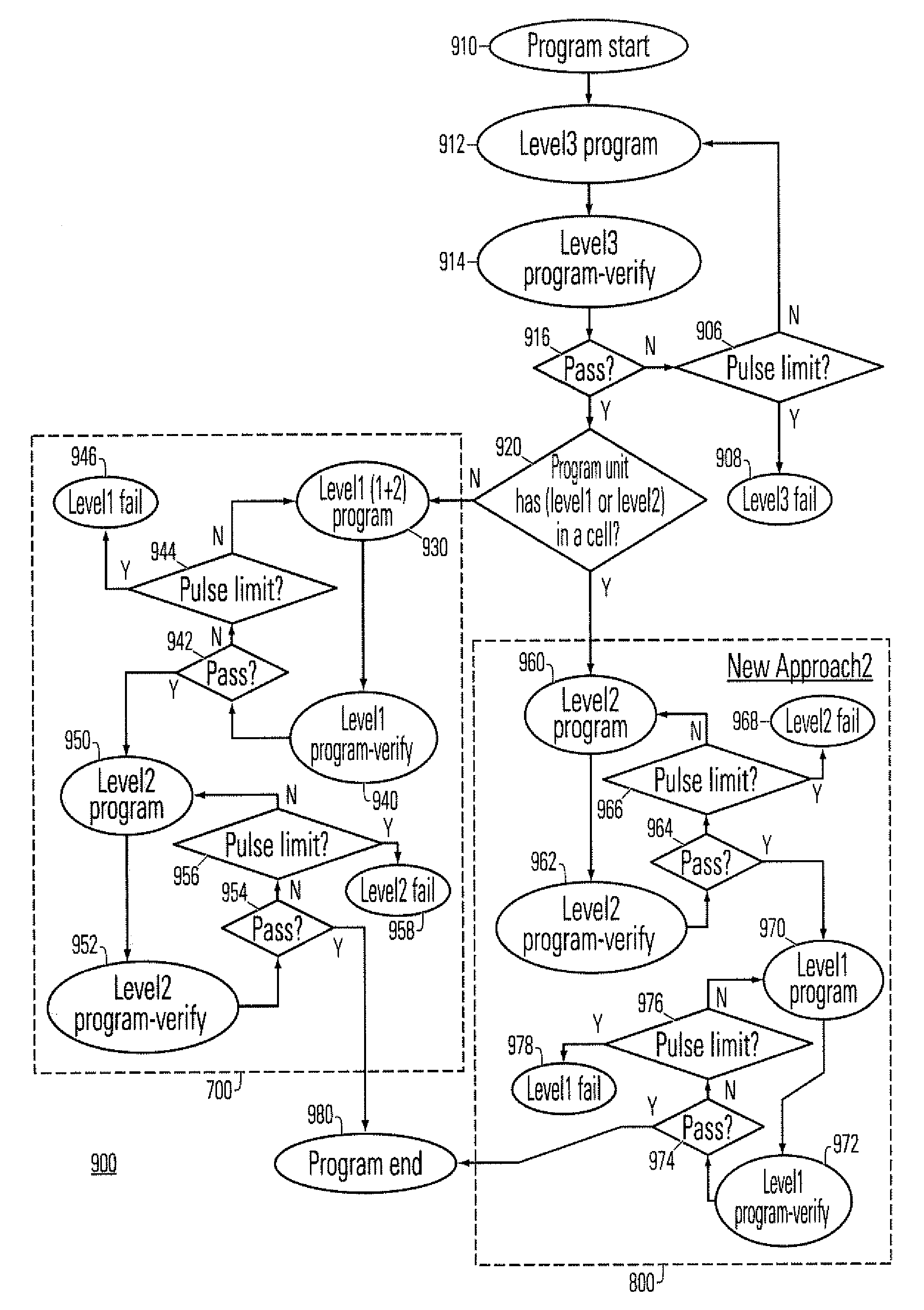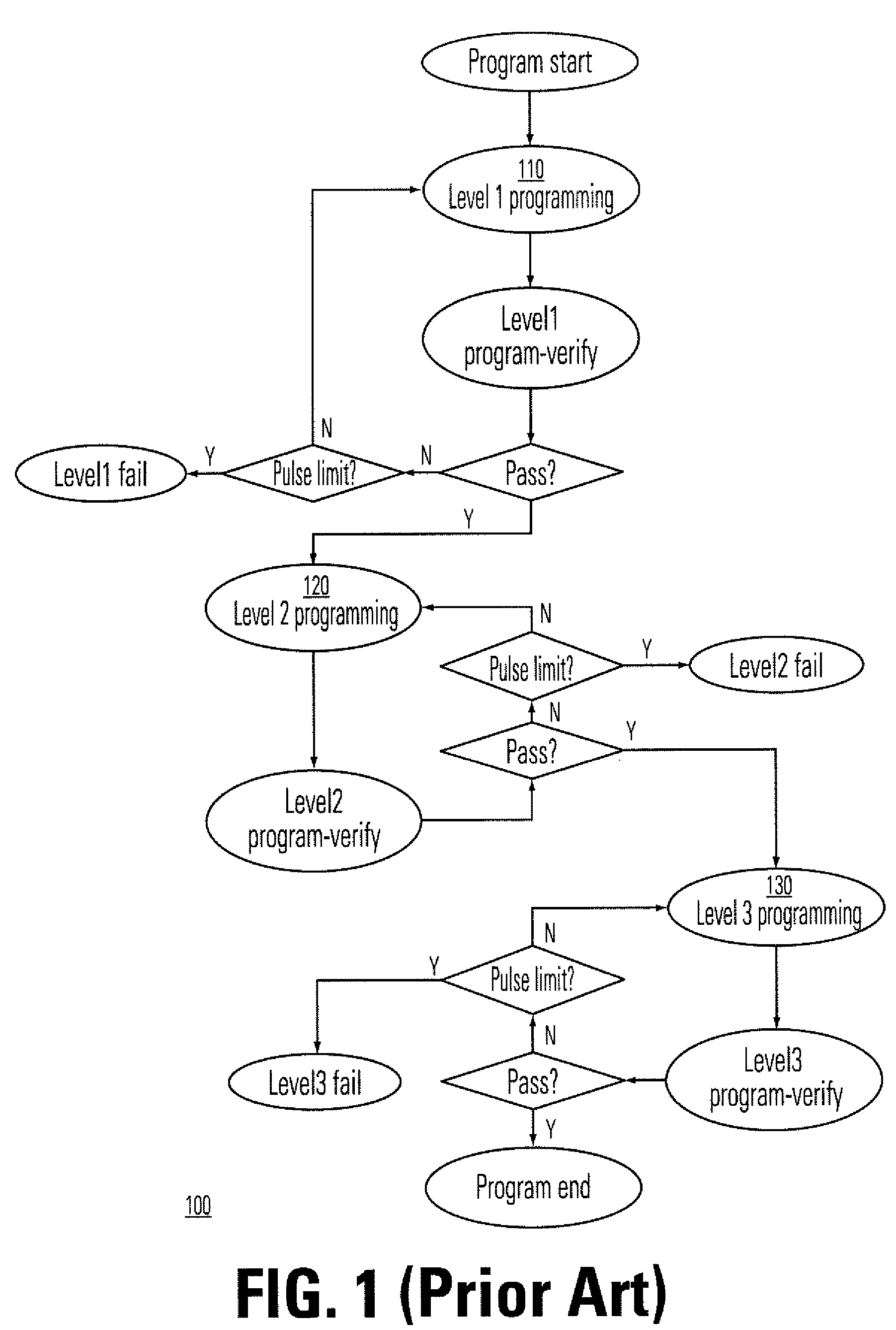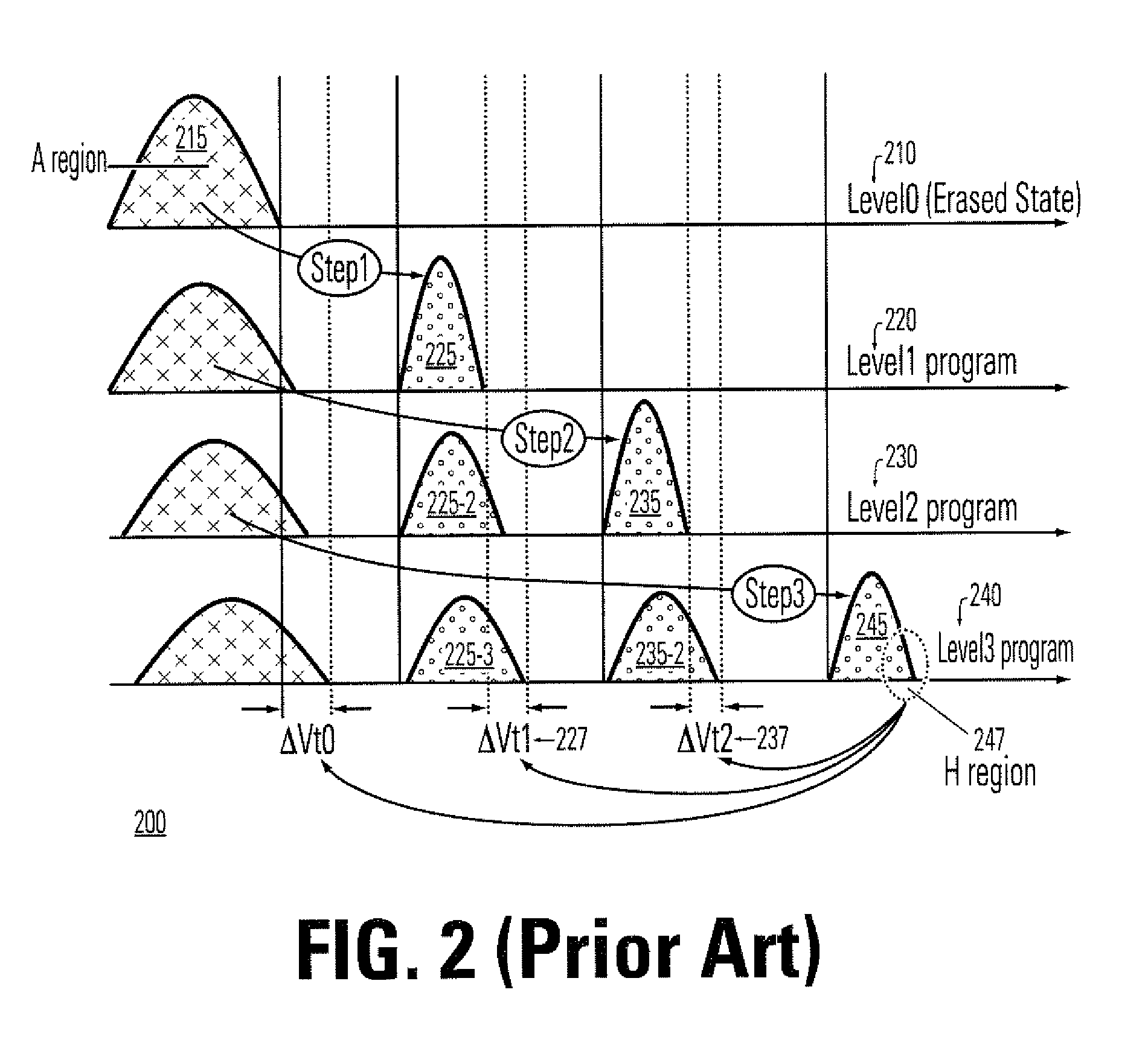Multi-Level-Cell Programming Methods of Non-Volatile Memories
a multi-level cell, non-volatile technology, applied in static storage, digital storage, instruments, etc., can solve the problem of reducing the width of the read window, and achieve the effect of reducing or eliminating the voltage threshold shift and avoiding the suppression of the duration of the read window
- Summary
- Abstract
- Description
- Claims
- Application Information
AI Technical Summary
Benefits of technology
Problems solved by technology
Method used
Image
Examples
first embodiment
[0040] In implementing the method in the first embodiment, at step 930, the process 900 conducts level1 (1+2) programming. While programming level1, the “predetermined level2 pattern” to level1 is also programmed at the same time so as to reduce subsequent programming time in level2. When programming level2 at step 950, the process 900 just needs to program the pattern from level1 to level2, rather than from level0 to level2 as taught in a conventional solution.
[0041] After the programming of level1 (1+2) at step 930, the process 900 performs a level1 programming verification at step 940. At step 942, the process 900 determines whether the level1 verification test has been passed. If the level1 verification does not pass, the process 900 checks for pulse limit at step 944. If the pulse limit has not been reached, the process 900 returns to step 930. If the pulse limit has been reached, the process 900 indicates that the level1 program failed at step 946. If the level1 verification d...
second embodiment
[0043] In implementing the method in the second embodiment, at step 960, the process 900 performs a level2 programming. The process 900 conducts a level2 program verification at step 962. At step 964, the process 900 checks to determine if the level2 program verification passes. If the verification does not pass, at step 966, the process 900 determines a pulse limit. If the pulse limit has not been reached, the process 900 proceeds to step 960. If the pulse limit has been reached, the process 900 indicates that the level2 programming failed at step 968.
[0044] If the program verification passes, the process 900 conducts level1 program at step 970. The process 900 performs a level1 program verification at step 972. At step 974, the process 900 checks if the program verification passes. If the program verification does not pass, at step 976, the process 900 checks a pulse limit. If the pulse limit has not been reached, the process 900 proceeds to step 970. However, if the pulse limit h...
PUM
 Login to View More
Login to View More Abstract
Description
Claims
Application Information
 Login to View More
Login to View More - R&D
- Intellectual Property
- Life Sciences
- Materials
- Tech Scout
- Unparalleled Data Quality
- Higher Quality Content
- 60% Fewer Hallucinations
Browse by: Latest US Patents, China's latest patents, Technical Efficacy Thesaurus, Application Domain, Technology Topic, Popular Technical Reports.
© 2025 PatSnap. All rights reserved.Legal|Privacy policy|Modern Slavery Act Transparency Statement|Sitemap|About US| Contact US: help@patsnap.com



